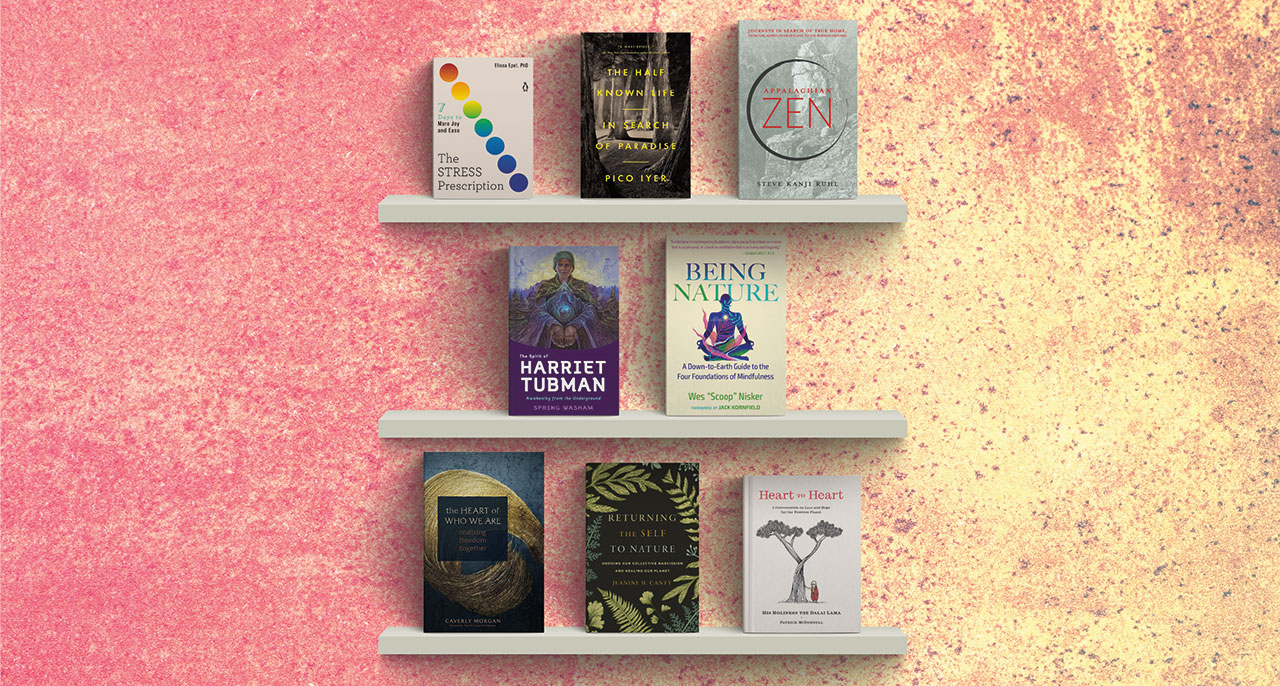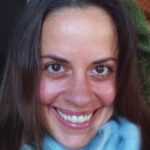Stress can be helpful, leading health psychologist Dr. Elissa Epel reminds us in her new book, The Stress Prescription: Seven Days to More Joy and Ease (Penguin Life). It can be motivating, energizing, and delivers the body resources it needs to meet challenges. Stress is not inherently bad, she writes, but chronic stress is. Epel catalogues stressors we need and stressors we need to “delete.” For Buddhists, many of her strategies for meeting stress in healthy ways may be familiar: relax in the face of uncertainty; loosen expectations; accept and find peace with pain; and cultivate a present-centered mind, which is nimble and flexible. Epel intersperses science-based reflections on ordinary, daily stress with a week’s worth of exercises to embrace and transform unavoidable stress.
The Half Known Life: In Search of Paradise (Riverhead Books) is an inquiry into whether paradise exists amid the world’s unceasing conflict. From Iran to North Korea, the Himalayas and Japan, the celebrated author Pico Iyer explores enticing sites like walled gardens and secluded temples. He takes his title from Moby Dick: “In the soul of man there lies one insular Tahiti, full of peace and joy, but encompassed by all the horrors of the half known life…. Push not off from that isle, thou canst never return!” Disregarding Melville’s obviously ironic warning, Iyer pushes off repeatedly, discovering the concept of “paradise” has meaning only after we outgrow all notions of perfection and take measure of the fallen world. (Think Siddhartha and Adam and Eve.) Iyer suggests we “push off” again and again from what we think we know.
In Appalachian Zen: Journeys in Search of True Home, from the American Heartland to the Buddha Dharma (Monkfish Book Publishing), Steve Kanji Ruhl relays his aching, grim story of homesickness for a place or thing or state of mind that, for years, he couldn’t seem to locate. It certainly wasn’t homesickness for his actual hometown, a place of desperation, cruelty, violence, and crushing poverty. Ruhl’s journey takes the reader through hallowed texts of ancient and contemporary literature, finally leading this poor Appalachian kid, whose ancestors were indentured servants and factory workers, to Zen Buddhism. Sentence for sentence, Ruhl’s language is brilliant and lyrical, and his unflinching story is an important commentary on American Zen—not as hobby or spiritual consolation among upper-class practitioners, but as real and ancient medicine, eminently available to anyone. Today, Ruhl is a Zen priest and teacher.
“Our ancestors have a much more powerful effect on our lives than we know,” reflects Spring Washam in The Spirit of Harriet Tubman: Awakening from the Underground (Hay House). The author, a meditation and dharma teacher, chronicles what she describes as a months-long experience of receiving direct transmissions from the spirit of Harriet Tubman. This compelling, painful, disorienting read weaves together Washam’s personal memoir with what she states are Tubman’s messages for today’s world, guiding the reader to be fearless and compassionate in facing hatred. These pages move us across space, time, and through a multidimensional universe to relay that the hero of the Underground Railroad is urgently asking something of all of us. Channeling the icon of liberation, Washam writes: “You’d best believe that I am still a conductor on the Underground and all you need to do is say yes when the time comes…. I will take you and anyone else who is ready to go.”
Wes “Scoop” Nisker is an author and meditation instructor who was a beloved fixture on the San Francisco original free-form radio station KSAN in the late sixties and seventies. Now, in Being Nature: A Down-to-Earth Guide to the Four Foundations of Mindfulness (Inner Traditions) he has created a playfully genuine, thoroughgoing program of meditations, drawing from fields of physics, evolutionary biology, and psychology. With tender wit, Nisker provides exercises and scientific extracts to help the reader step outside of conditioned patterns. For the spiritual skeptic, he explains with curiosity and awe how recent research in science-based disciplines is increasingly offering us the same insights the Buddha experienced and taught more than 2,500 years ago. Nisker’s book is a friendly but nevertheless unflinching set of reflections and body-awareness exercises that may help the reader reframe scientific thinking and spiritual awakening as threads of the same fabric.
The question at the center of former Zen monk Caverly Morgan’s The Heart of Who We Are: Realizing Freedom Together (Sounds True) is one I imagine arises regularly for most of us: how to commit to non-harming, to oneness—indeed to any of the precepts—while simultaneously participating in systems (of food production, of education, of oppression) that we recognize as harmful, yet upon which so many are utterly dependent. Morgan explores for the reader both the relative and absolute dimensions of such questions, writing directly from her own life, taking inventory of many ways she believes she has directly participated in causing harm. Morgan aims to reorient her personal seeking and unease into collective strategies for facing difficult questions about how we live.
Teacher and ecopsychologist Jeanine M. Canty’s Returning the Self to Nature: Undoing Our Collective Narcissism and Healing Our Planet (Shambhala) explores a series of critical and uncomfortable questions: Does narcissism in mainstream Western society reflect something more than the sum of our individual entanglements with vanity? Has narcissism become a collective phenomenon? How does it endanger the planet, and what can we do about it? Canty breaks down what narcissism is and is not, and how she believes what was once a personal pathology has now become rooted more deeply and is reaching more broadly across communities into our treatment of Earth. A powerful current of consumer culture is escalating widespread narcissism and ecological destruction. But, Canty believes, we can learn to swim against the stream.
The Dalai Lama’s new children’s book is one of the most exquisite books I’ve read in years, in any genre—and I’ve read a lot of books! Heart to Heart: A Conversation on Love and Hope for Our Precious Planet (HarperOne) tells the story of a homeless, troubled panda who travels miles to knock on the door of the Dalai Lama. Across pages elegantly drawn by award-winning author/artist Patrick McDonnell, the new friends traverse landscapes depicting environmental harm. Yes, the character of the Dalai Lama says, all living beings are now experiencing tremendous loss, and yes, human beings are behind just about all of it. The solution is in the transformation of the heart. Everyone is responsible, and everyone is capable. In the pages that follow, His Holiness explains to the panda what radical compassion entails, and how to cultivate a “good heart” and healthy home in which all beings thrive. It is possible.

